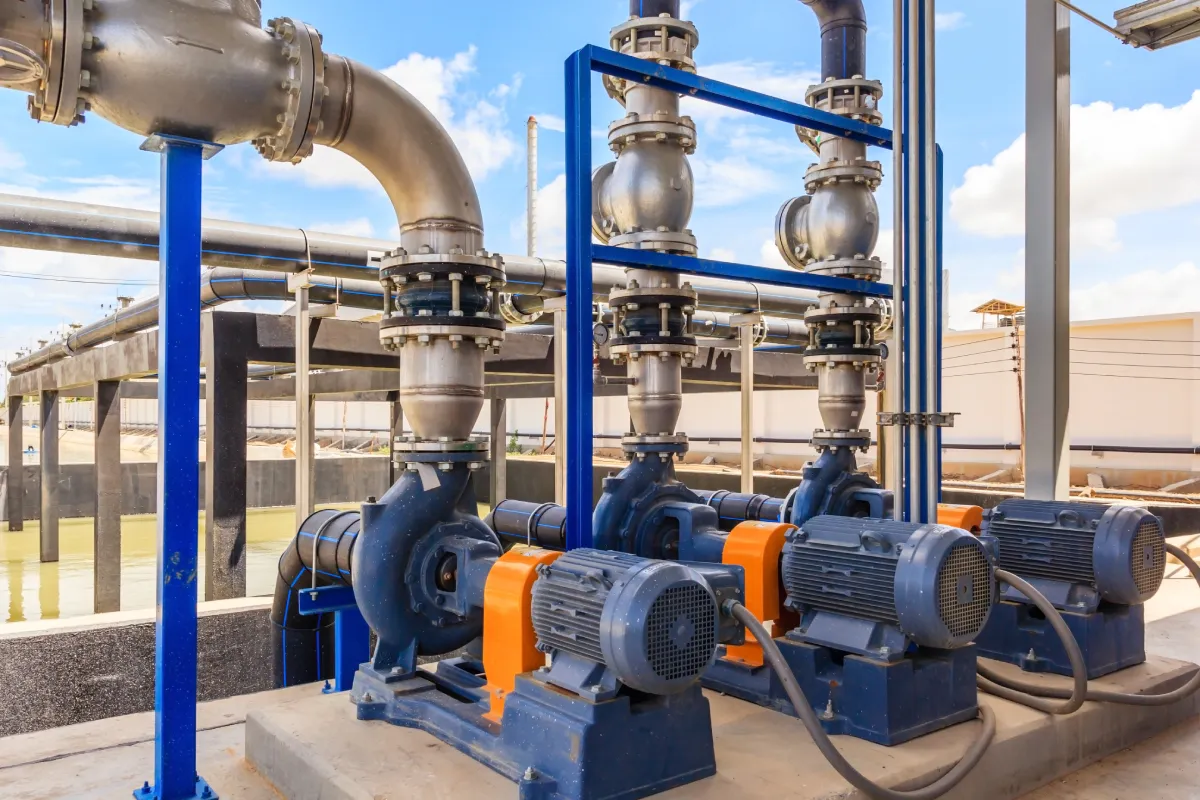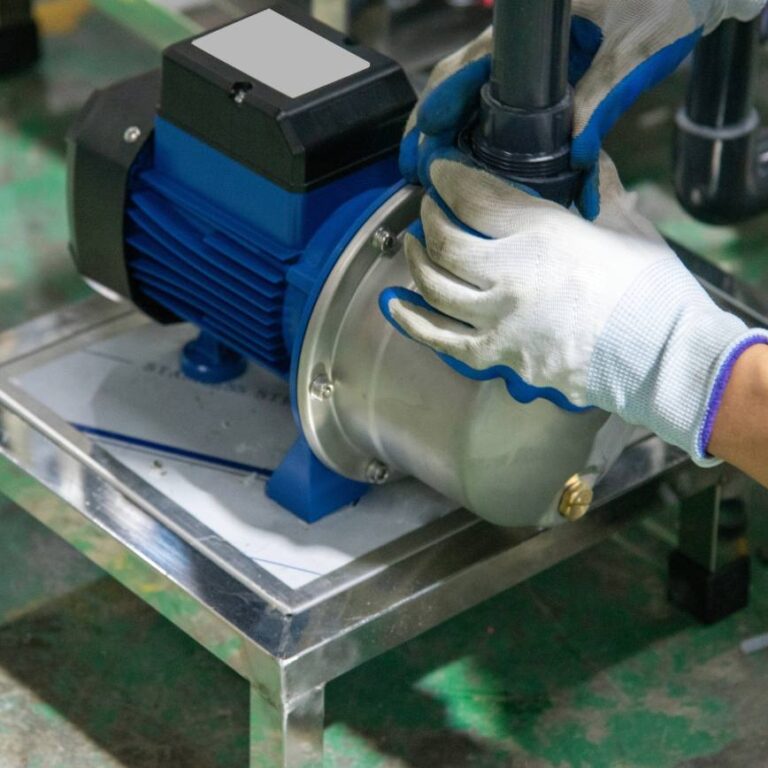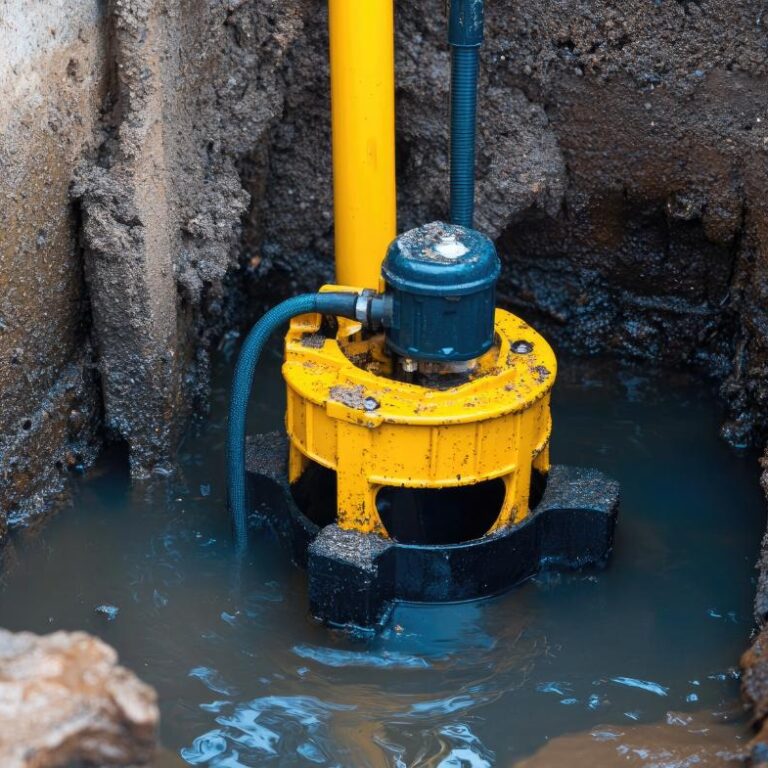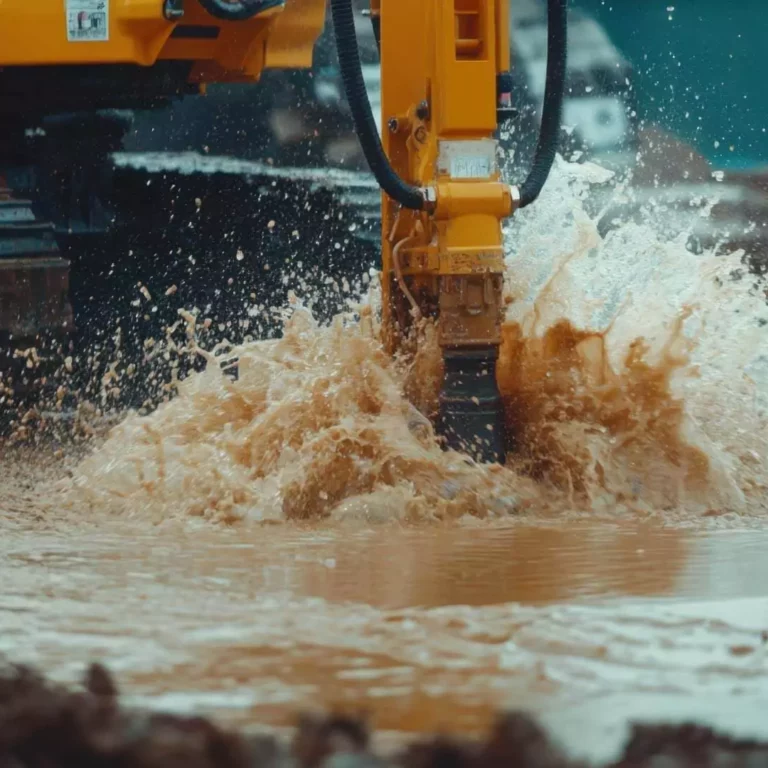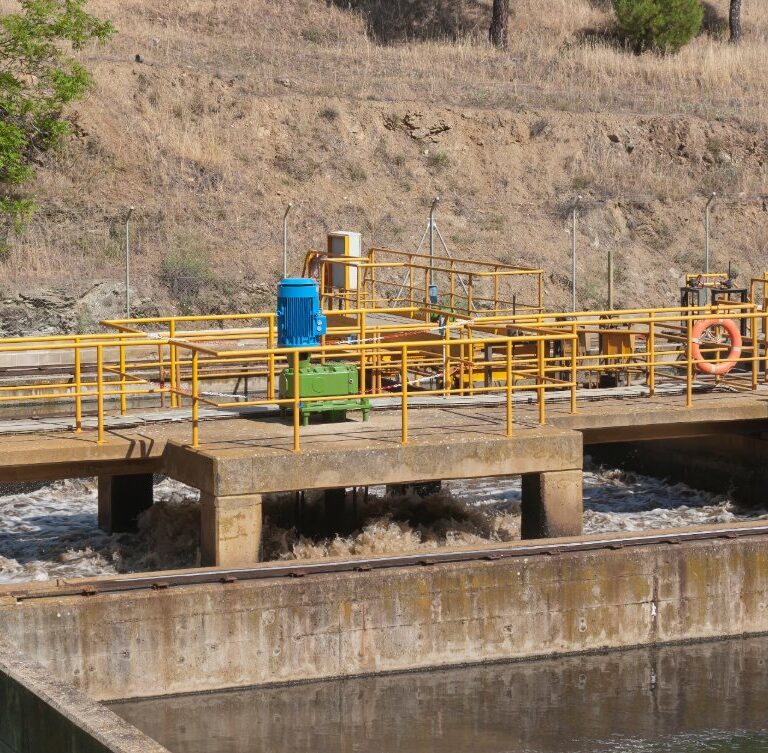How Sludge Pumps Handle High-Solids and Abrasive Materials
Sludge pumps are essential in industries that deal with high-solids, abrasive, and challenging materials. Engineered to move thick, particle-heavy fluids with efficiency, they are widely used in mining, oil and gas, and wastewater treatment. Their sturdy design enables them to handle dense slurries and sludge without clogging or excessive wear, making them a reliable solution where conventional pumps often fail.
In mining, these pumps serve a crucial purpose in controlling slurry and tailings, which are often abrasive and require heavy equipment to manage. Slurry pumps are used in oil and gas operations to remove heavy fluids from drilling sites, as well as to manage high-viscosity materials that ordinary pumps cannot handle. Similarly, in wastewater management, these pumps help remove deposited sludge from treatment facilities, preventing system obstructions and ensuring continued operation.
This blog is designed for procurement heads, engineering managers, project contractors, government buyers, and decision-makers in heavy industries, including mining, oil and gas, and municipal services. These professionals are responsible for selecting the right equipment that ensures optimal performance, cost-efficiency, and long-term reliability. Understanding the technical benefits of sludge pumps and how they address the challenges of handling high-solids and abrasive materials is essential for making informed decisions in these industries.
Understanding Sludge Pumps: Built for Tough Jobs
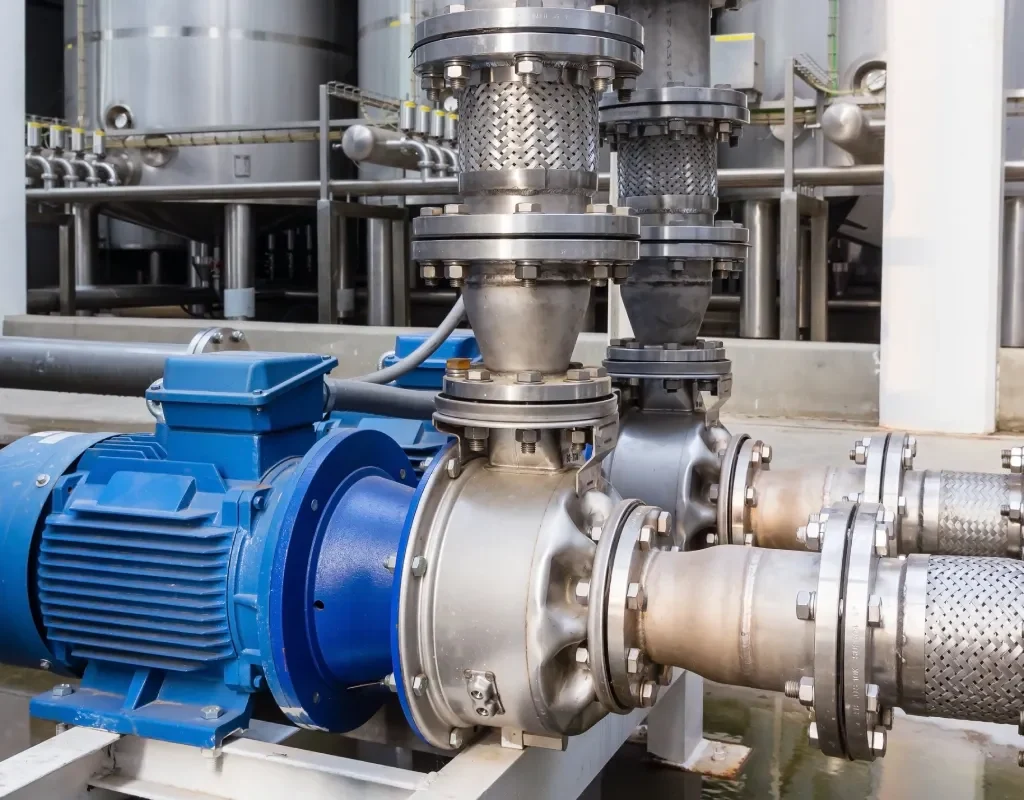
Sludge pumps are specifically designed to handle high-solids and abrasive materials, setting them apart from traditional pumps. Unlike standard pumps, which are optimized for clean water or low-viscosity fluids, slurry pumps are engineered to handle thick, particle-laden fluids. These pumps excel in environments where regular pumps fail, such as in mining, wastewater treatment, and dredging applications. Whether dealing with sand, gravel, mud, or other coarse materials, the sludge pump provides the necessary power and durability to move even the most challenging substances.
The specialized engineering of the sludge pump ensures that it can efficiently move thick slurries and sludge without clogging or prematurely wearing out. This is achieved through a combination of design features tailored for handling solids, such as large passageways, which allow debris and coarse materials to pass through the pump without obstruction.
Additionally, these pumps incorporate wear-resistant internal components to minimize damage from the abrasiveness of the materials being handled. Robust seals further enhance the pump’s ability to maintain operational integrity, ensuring reliable performance even under the most demanding conditions.
One of the key advantages of these pumps is their ability to operate continuously in demanding environments. Whether in mining slurry management, wastewater treatment plants, or dredging operations, these pumps are crucial for efficiently moving sludge, slurry, and other abrasive materials. A sludge pump rental is an ideal solution for companies that require temporary pumping power for projects involving heavy solids, where investing in long-term equipment is not practical.
In industries such as oil and gas, where submersible sludge pumps are often deployed in submerged environments, these pumps provide the needed reliability to handle viscous and abrasive fluids. The unique design of submersible sludge pumps makes them well-suited for situations where pumps need to operate underwater, extracting heavy sludge from deep reservoirs or pits. Their ability to work efficiently in confined, challenging spaces makes them indispensable for operations requiring consistent, long-term pumping performance.
For companies seeking to manage sludge and other challenging materials, understanding the advantages of a submersible sludge pump, including its robust construction, wear resistance, and solid-handling capacity, is crucial in selecting the right equipment for the job. Whether purchasing or opting for sludge pump rental, businesses can rely on these specialized pumps to ensure optimal results across a wide range of industries.
Can a Sludge Pump Handle Solids?
Sludge pumps are specially designed to handle the challenges presented by high-solids and abrasive materials. They are built to effectively transport thick, particle-laden fluids that traditional pumps cannot manage. These slurry pumps feature large passageways and rugged components that prevent clogging and ensure smooth operation in tough environments. Whether dealing with sand, gravel, mud, or other abrasive substances, a submersible sludge pump provides the necessary power to keep operations running without interruptions.
In industries such as dredging, mining, and wastewater treatment, slurry pumps are indispensable. In dredging operations, they efficiently remove sediment, sand, and silt from waterways, maintaining clean channels for navigation and infrastructure development. In mining, sludge pumps handle slurry mixtures containing minerals, water, and sand, ensuring that mining operations continue smoothly without risk of pump failure due to clogging. Similarly, in wastewater treatment, these pumps transport thick sludge from one stage of treatment to another, ensuring the plant’s systems run without downtime.
Real-world examples of slurry pumps highlight their reliability and versatility. For example, in a mining operation, a submersible sludge pump was used to move a heavy slurry composed of water, sand, and fine gravel from a mining pit. In wastewater treatment, slurry pumps are used to remove accumulated solids from primary and secondary clarifiers, thereby preventing system backups and ensuring efficient treatment. These submersible slurry pumps are designed to operate directly in submerged environments, making them ideal for use in areas where other pumps cannot function effectively.
How Does a Sludge Pump Work?
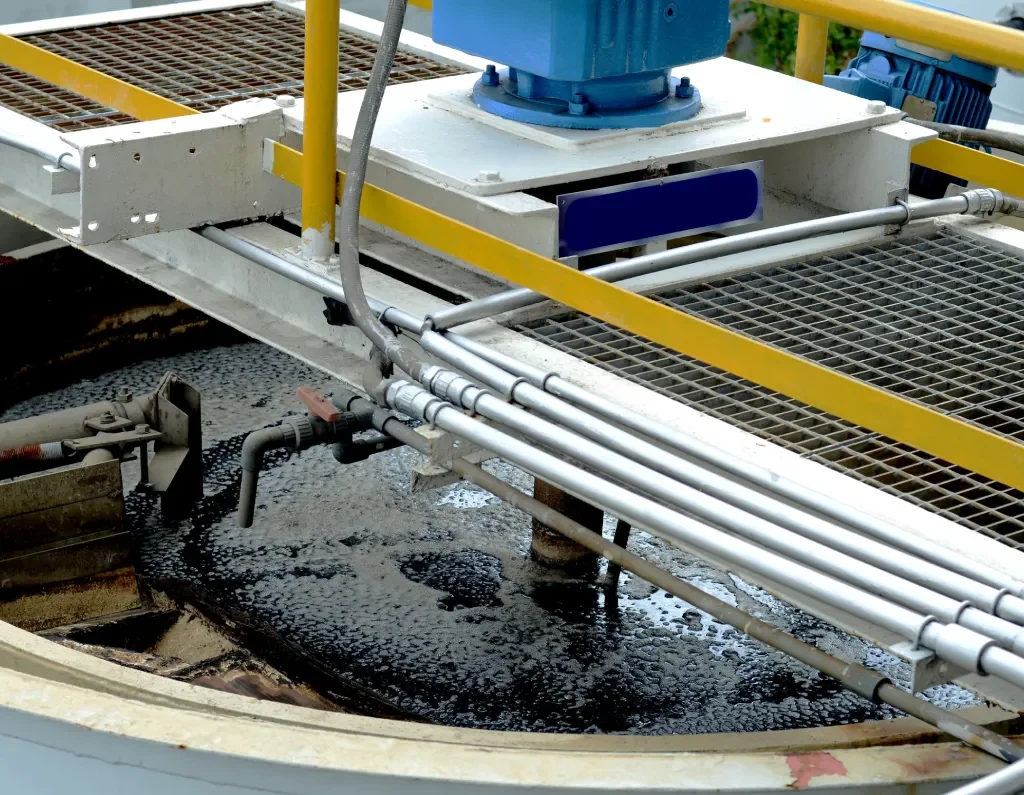
Sludge pumps operate through a combination of powerful motors, heavy-duty impellers, and durable construction, all of which work together to handle challenging solids-laden fluids. At the heart of the pump is the motor, which can be either electric or hydraulic in nature. The motor drives the impeller, which generates high kinetic energy that moves the thick sludge, slurry, and other solids-laden materials through the pump and into discharge pipes or hoses.
The impeller is specifically designed to handle high-viscosity and solid-heavy materials. It ensures that the submersible sludge pump can maintain a continuous, smooth flow of material without causing clogs. The kinetic energy generated by the impeller helps overcome the resistance of thick, abrasive fluids, allowing them to flow through the pump efficiently. The motor and impeller work in tandem to deliver reliable performance in demanding environments such as mining, dredging, and wastewater treatment.
In addition to the impeller, abrasion-resistant materials and sturdy housing are crucial for the lifetime and endurance of slurry pumps. These materials are specifically chosen to withstand wear from handling abrasive particles, such as sand, gravel, and mud. The sturdy casing ensures that the pump can continue to operate without harm, even under the most extreme situations.
For applications that involve extremely high-viscosity fluids, slurry pumps equipped with positive displacement mechanisms offer significant advantages. These mechanisms provide a steady and consistent flow of fluids, even when the viscosity fluctuates. This is particularly important when handling materials such as thick sludge, where traditional pumps may struggle to maintain efficiency. Positive displacement pumps ensure that the submersible sludge pump continues to operate smoothly, minimizing pulsation and preventing blockages, which is essential for long-term, efficient performance.
The combination of high-performance motors, strong impellers, and durable materials makes slurry pumps a reliable solution for handling thick, abrasive materials across a wide range of industries. Whether through sludge pump rental for short-term projects or long-term installations, these pumps provide the reliability and durability needed to handle the most demanding solid-handling applications. Submersible sludge pumps are particularly effective in submerged environments, ensuring that slurry pumps maintain optimal performance even in challenging conditions.
Effective Methods of Handling and Removing Sludge
Effective handling and disposal of sludge requires the use of appropriate equipment, procedures, and continual maintenance. Advanced dredge and slurry pumps are one of the most effective ways to remove sludge. These pumps are designed to efficiently collect and transfer sludge from various settings, ensuring that systems remain operational without costly downtime.
In real-world applications such as lagoon dredging, mining pits, and wastewater treatment tanks, slurry pumps are needed for managing and removing accumulated sludge. Lagoon dredging, for instance, often involves extracting thick sediment that has built up over time. Sludge pumps provide the necessary force to handle these high-solid materials, ensuring that the lagoon is cleared for further use. In mining pits, where slurry mixtures can be particularly abrasive, pumps capable of moving dense, high-viscosity fluids are essential to maintaining efficiency and preventing blockages. Wastewater treatment operations also rely on slurry pumps to remove settled solids from treatment tanks, thereby preventing system backups and ensuring the facility runs smoothly.
To enhance efficiency, many sludge pumps for rental are now integrated with sensor technology. This integration enables real-time monitoring of sludge removal processes, allowing operators to optimize the flow and density of materials being removed. For example, submersible slurry pumps with integrated sensors can track the amount of sludge being extracted, ensuring that operations are running at peak efficiency. This technology also helps monitor the pump’s condition, preventing potential issues before they become major problems.
Other key aspects of successful sludge management include reducing downtime and damage. Companies can ensure their slurry pumps continue to run optimally by implementing proactive maintenance procedures and utilizing real-time control systems. Preventive maintenance, such as regular checks of impellers, seals, and bearings, reduces the likelihood of unexpected breakdowns and extends the equipment’s lifespan. Furthermore, real-time control systems enable quick modifications to the pump’s operation, thereby increasing efficiency and reducing wear on key components.
Types of Pumps for Extremely Thick Sludge
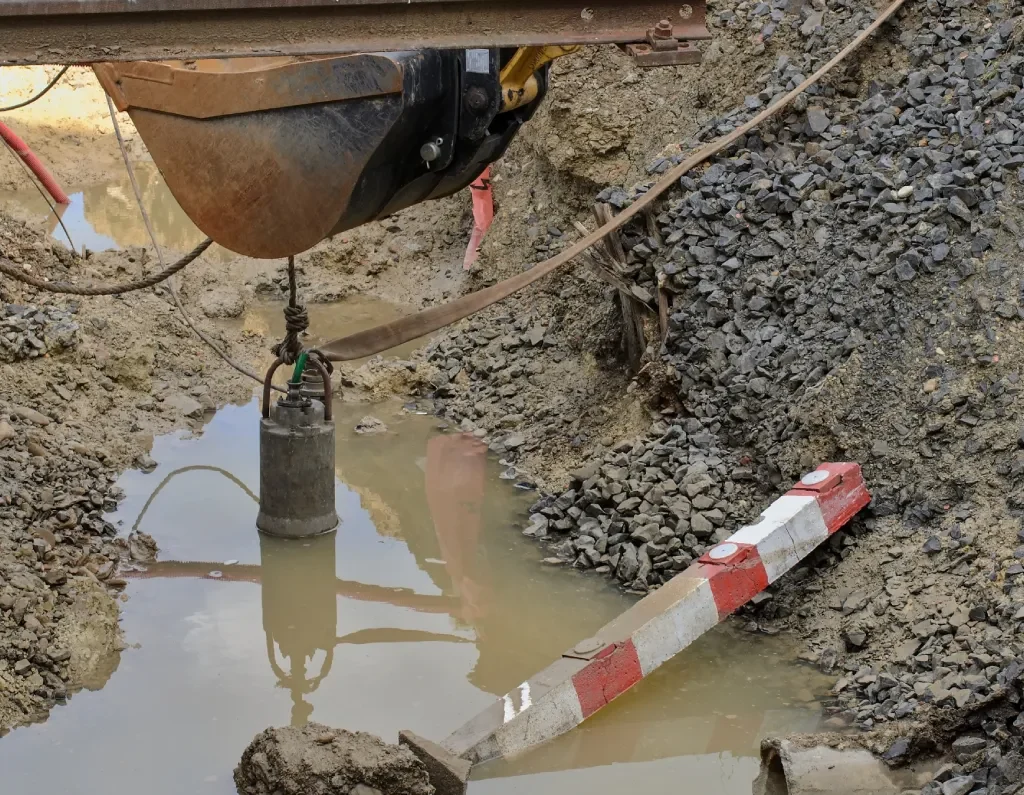
When dealing with extremely thick and abrasive sludge, selecting the right type of pump is crucial. Not all pumps are built to handle such demanding applications, which is why sludge pumps come in various designs to accommodate different types of materials and conditions. Below is an in-depth look at the types of pumps best suited for moving extremely thick sludge:
Centrifugal Slurry Pumps
Centrifugal slurry pumps are one of the most commonly used pumps for handling thick sludge in high-abrasion environments. These pumps operate by converting rotational energy into kinetic energy to move the sludge through the system. The key benefits of centrifugal slurry pumps include their ability to handle a wide range of materials, from fine particles to large solids, without clogging. The large impeller and wear-resistant components enable these pumps to perform efficiently, even when handling the most abrasive materials. In mining and dredging, these pumps are ideal for slurry transport in both continuous and intermittent operations.
Positive Displacement Pumps
Positive displacement pumps, such as progressive cavity and peristaltic pumps, are designed to provide a constant, steady flow of fluid, making them ideal for extremely thick and viscous sludge. These pumps excel in environments where maintaining consistent delivery is critical. Progressive cavity pumps move sludge through a series of rotors and stators, providing a smooth flow with minimal pulsation, making them particularly effective for applications that require high precision and accuracy. Peristaltic pumps, on the other hand, use a series of rollers to compress the hose and move the sludge, offering an additional layer of flexibility. Both types of positive displacement pumps are ideal for handling materials that could cause wear or clogging in centrifugal pumps.
Submersible Sludge Pumps
Submersible sludge pumps are specifically designed for submerged applications, making them optimal for use in sludge pits and other confined spaces. These pumps are engineered to operate underwater, offering the flexibility needed to extract thick sludge directly from tanks, lagoons, or other bodies of water. Unlike traditional pumps, which require suction from above ground, submersible sludge pumps can be fully immersed, allowing them to efficiently remove sludge from areas where other equipment may not be able to operate. They are particularly useful in mining pits, wastewater treatment plants, and dredging operations where the sludge is often located deep within the tank or pit.
Case Examples
To illustrate the effectiveness of these pumps, consider the use of submersible sludge pumps in a large wastewater treatment facility. The submersible sludge pump is lowered into the sludge tank to extract accumulated solids, ensuring minimal disruption to the plant’s operations. Another example is a centrifugal slurry pump used in a mining operation, where it handles thick, abrasive slurry from a mining pit. The robust design of the centrifugal pump ensures the efficient transportation of the slurry without clogging or damage.
For companies looking for short-term sludge pump rental options, a submersible sludge pump is a versatile and reliable choice, particularly when needing to handle high-solids applications in confined or submerged environments. Whether for a long-term installation or a temporary sludge pump rental, selecting the right pump based on specific needs and conditions is critical to maintaining operational efficiency and minimizing maintenance costs.
Real-World Applications of Sludge Pumps
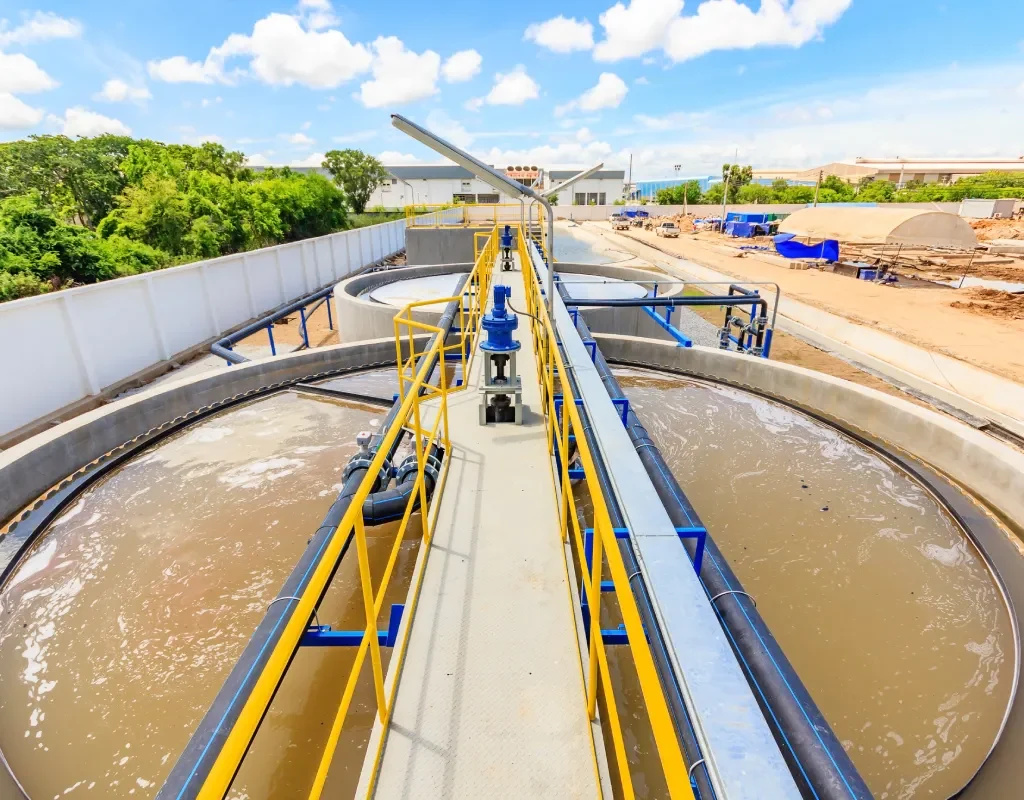
Sludge pumps are critical to various industries that deal with thick, high-viscosity materials. Their robust design and reliable performance make them indispensable in mining, oil and gas, municipal, and environmental applications.
Application in Mining: Tailings Management and Slurry Transport
In the mining industry, slurry pumps are essential for managing tailings and transporting slurry. Sludge pumps efficiently move a mixture of water, minerals, and coarse materials from mining pits, tailings ponds, or processing plants. These pumps are designed to withstand the high abrasion and viscosity typically found in mining slurries, ensuring smooth transportation over long distances. The use of submersible slurry pumps in mining pits allows for direct removal of sludge from deep areas where surface pumps may struggle. By maintaining consistent operation and preventing clogging, slurry pumps help keep mining operations running smoothly and reduce costly downtime.
Application in Oil and Gas: Handling Heavy Sludge in Drilling and Offshore Operations
The oil and gas industry frequently faces challenges related to handling heavy sludge generated during drilling and offshore operations. Sludge pumps are used to transport thick, oily sludge from drilling sites and offshore platforms, ensuring that these materials are safely and efficiently disposed of or processed. Submersible slurry pumps are particularly effective in offshore drilling operations, where they can operate underwater to remove accumulated sludge and prevent equipment failure. The powerful motors and durable construction of slurry pumps ensure they can withstand the demanding conditions of offshore environments, providing reliable service while reducing maintenance needs and operational disruptions.
Application in Municipal: Wastewater Treatment and Dewatering Systems
Municipalities rely on slurry pumps to manage wastewater treatment and dewatering systems. In wastewater treatment plants, slurry pumps are used to remove thickened sludge from primary and secondary treatment stages, ensuring efficient waste processing and preventing backups. Submersible slurry pumps are often deployed in underground tanks and wells, where they can pump sludge directly from deep areas.
In dewatering systems, slurry pumps help transport water-saturated solids to dewatering units, where water is separated from sludge for disposal or recycling. These pumps play a crucial role in maintaining the efficiency of municipal systems, ensuring that wastewater is processed and treated in a timely manner.
Environmental Impact: Role in Cleaning Up Industrial Sludge and Promoting Sustainability
In addition to their operational role, slurry pumps have a significant environmental impact. They are necessary for cleaning up industrial sludge, which may contain hazardous materials such as heavy metals, chemicals, and contaminants. Sludge pumps facilitate the removal of these substances from contaminated sites, helping to reduce pollution and promote environmental sustainability.
By efficiently managing industrial sludge, these pumps contribute to safer and cleaner ecosystems, supporting regulatory compliance. The ability to handle sludge safely and effectively is a key factor in mitigating environmental risks and promoting long-term sustainability in industries such as mining, oil and gas, and municipal wastewater management.
Performance Benefits and ROI of Using Sludge Pumps
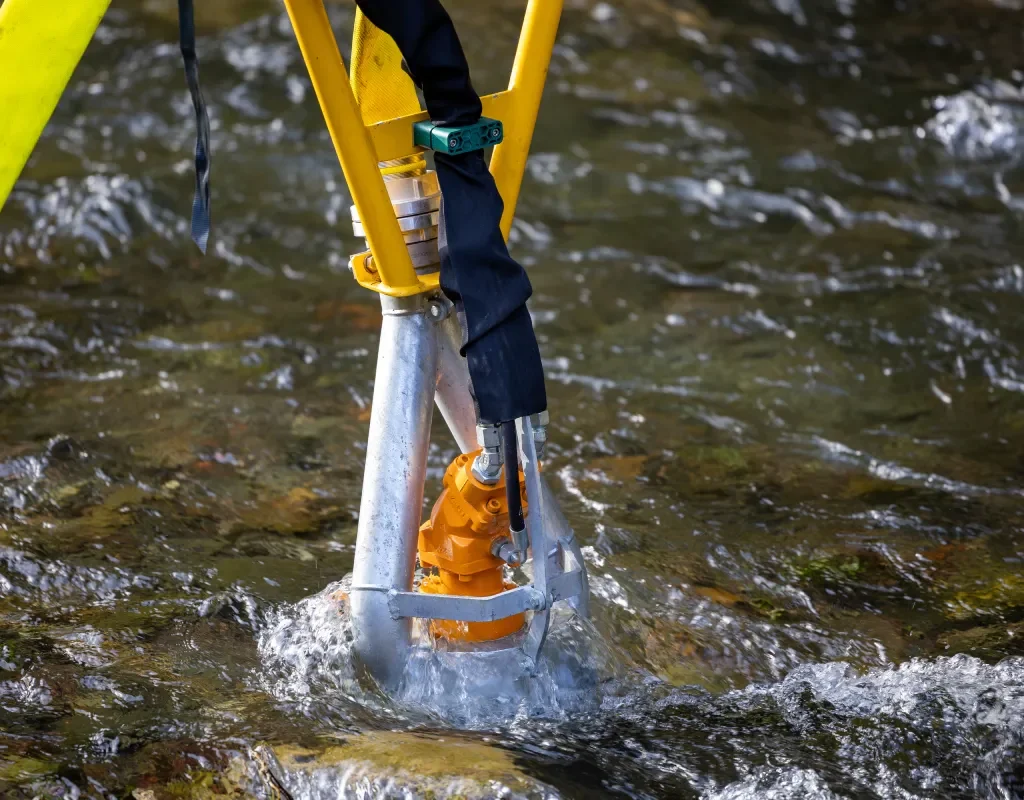
Investing in high-performance slurry pumps offers numerous benefits that directly impact the bottom line of businesses in industries such as mining, oil and gas, and wastewater management. These benefits not only improve operational efficiency but also deliver long-term financial returns.
Cost-Effectiveness of Using High-Performance Sludge Pumps
The cost-effectiveness of sludge pumps is evident in the reduction of operational disruptions. High-performance pumps, particularly submersible slurry pumps, are designed to handle abrasive, high-viscosity materials without clogging or failing. This reduces the need for frequent repairs or replacements, saving businesses on maintenance and downtime costs. For companies considering short-term solutions, sludge pump rental offers an affordable option, providing access to high-quality equipment without the need for long-term investment. This is particularly beneficial for projects requiring temporary pumping power, such as mining operations or municipal dewatering projects.
Long-Term ROI Through Reduced Downtime and Maintenance
One of the primary factors influencing the return on investment (ROI) of slurry pumps is their ability to reduce downtime and maintenance expenses. Companies may considerably increase the lifespan of their equipment by adopting long-lasting, high-quality pumps intended for harsh conditions. This leads to fewer maintenance and less frequent equipment replacements, cutting overall ownership costs. Slurry pumps, particularly submersible sludge pumps, are efficient enough to operate continuously even in tough situations, decreasing production interruptions and improving overall system performance.
How Sludge Pumps Lower Operational Costs by Preventing Clogging and Equipment Damage
Sludge pumps reduce operational costs by preventing clogging and equipment damage. The design of these pumps, including large passages and wear-resistant components, allows them to handle thick sludge and abrasive materials with ease. Without the risk of clogging or damage to internal components, businesses can avoid costly repairs and replacements. This translates into lower maintenance expenses and reduced labor costs for pump inspections and repairs. By preventing operational disruptions, slurry pumps ensure that facilities and operations run smoothly, ultimately saving businesses significant amounts of money in the long run.
Case Studies Demonstrating the ROI of Sludge Pump Investment in Various Industries
Case studies from the mining and municipal wastewater treatment sectors showcase the ROI of investing in slurry pumps. For example, a mining operation using submersible sludge pumps saw a dramatic reduction in equipment failures and downtime, resulting in a 15% increase in operational efficiency over the course of a year. Similarly, a municipal wastewater treatment plant that invested in high-performance slurry pumps experienced a significant reduction in maintenance costs and an overall improvement in treatment efficiency, leading to a more sustainable and cost-effective operation. These examples highlight the tangible financial benefits of using high-quality slurry pumps, whether through direct purchase or sludge pump rental for short-term needs.
By choosing the right sludge pump, whether through purchase or sludge pump rental, industries can improve performance, reduce costs, and achieve significant ROI, ensuring long-term operational success and financial sustainability.
Why Choose Sludge Pumps for Your Industry
Sludge pumps are specifically engineered to handle the challenges presented by abrasive and high-solids materials. Their sturdy design, durability, and reliability make them essential for industries such as mining, oil and gas, wastewater treatment, and environmental cleanup. These pumps offer key advantages, including the ability to efficiently transport thick, viscous fluids and handle solid-laden slurries without clogging or damaging the equipment. Whether it’s managing mining tailings, handling sludge in wastewater treatment plants, or removing heavy sludge from offshore drilling operations, slurry pumps ensure smooth and continuous operation even in the harshest conditions.
When selecting the right sludge pump, it is essential to consider the specific needs and industry requirements. Factors such as pump type, material handling capacity, and environmental conditions must be considered. For operations that require submerged pumping, submersible sludge pumps are the perfect choice, providing reliability even in confined or underwater environments. For temporary projects, sludge pump rental offers flexibility and cost-effectiveness, ensuring access to high-quality equipment without long-term commitments.
Contact us today for more information on sludge pump solutions and sludge pump rentals designed for your specific industry needs. Our team is ready to help you find the best pump to optimize your operations and ensure the efficient removal of sludge and solids.

